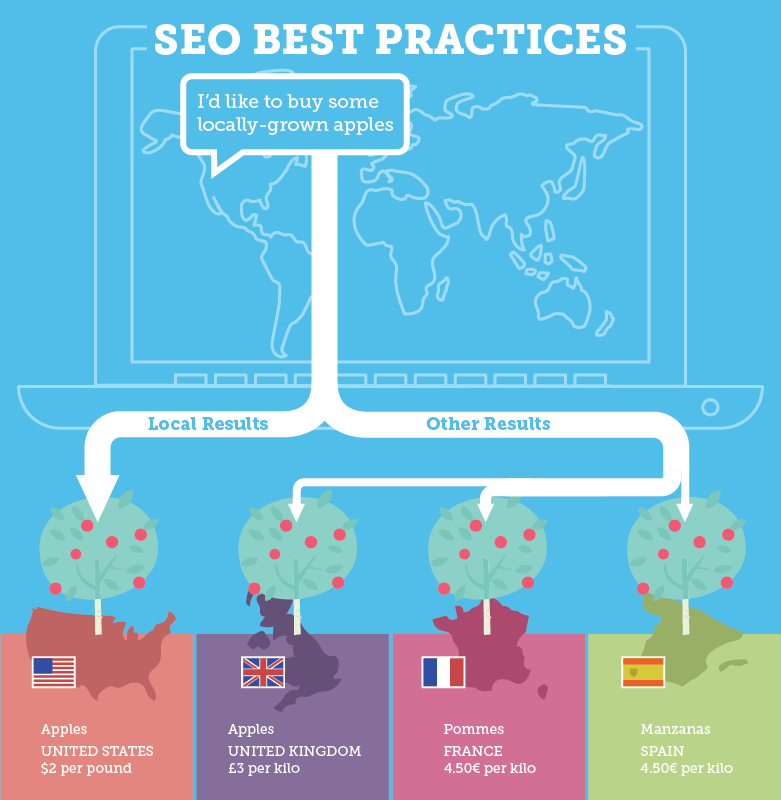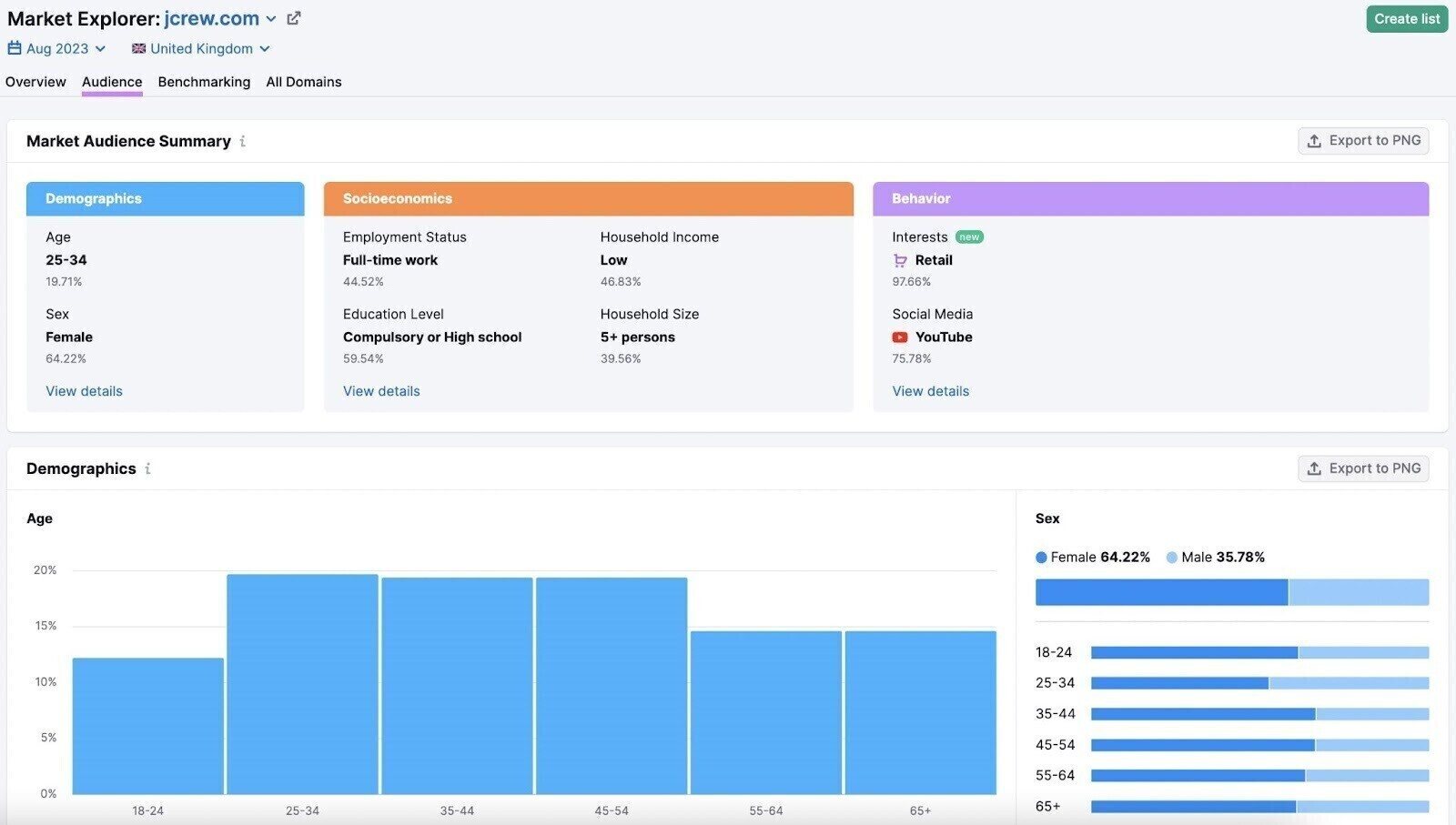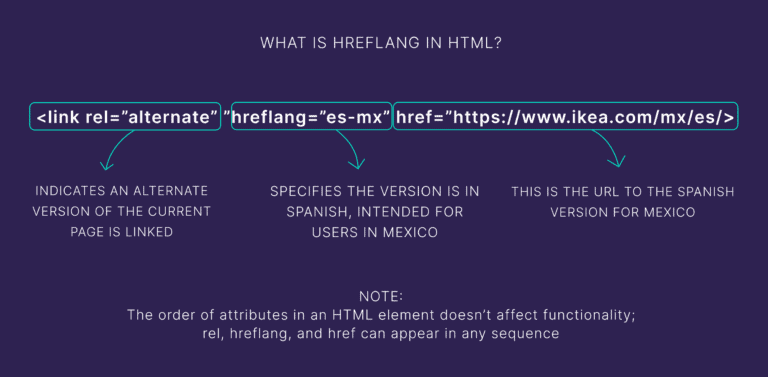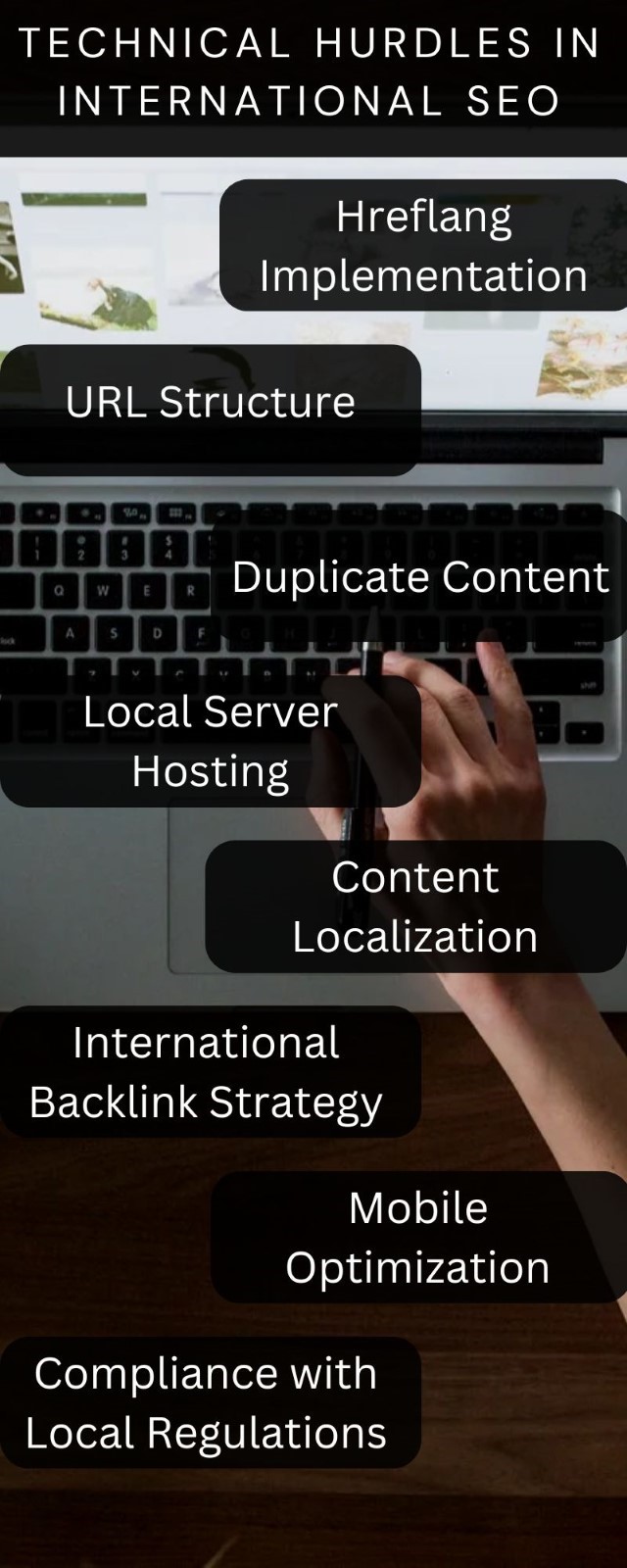What if your business was not limited to millions but to billions of customers all over the world?
With the growing digital landscape, international SEO is no longer a matter of choice but of necessity. However, there are far more global search engine options beyond what most people think.
Although Google holds a tremendous market share in most areas, more than 676 million internet users in China utilize Baidu, and 64 million daily users opt for Russia’s Yandex.
That brings us to the question of how one can succeed in this fast-changing environment.
It is crucial to tailor your SEO strategy to address the specific challenges that these regional behemoths present. With changes in search behavior and the development of new technologies, the demand for a more effective and global SEO strategy has never been more necessary.
This blog is about helping your brand prosper in these new digital frontiers and be heard and seen by audiences worldwide amidst the growing competition.
What is International SEO
moz.com
Suppose you are in charge of a worldwide celebration where people from different parts of the globe are invited. Just as you would cater to their different needs and preferences on food, music, and decor, international SEO entails ensuring your website fits a global audience.
It is like going global with your digital strategy, making sure that your business is visible to users at any place at any time and in any language they prefer on a search engine.
The essence of International SEO involves more than simple content translation or the inclusion of a few hreflang tags. It involves a detailed consideration of the target markets and how they will use the site, what keywords they will be using, their cultural inclinations, and other competitors they may have.
Let’s bring a case study to the fore!
A real-life, successful example of international SEO is Viking, which provides office supplies, stationery, and furniture. The marketing campaign formulated by Viking entailed concentrating on the incremental of seven targeted countries to improve online sales, website visibility, and brand recognition.
Despite the fact that these countries are closely affiliated, they vary greatly in terms of culture, language, and buying behavior. In its strategy, Viking used country segmentation, which means that it viewed each country as a separate market.
To optimize their content for the audience in different nations, they hired native language marketers to perform keyword research and write content that would meet user intent in each country. This had the backing of sound backlinking techniques to garner high authoritative, local backlinks that helped in ranking.
The results were impressive!
There was an increase in the overall organic traffic across every territory, from 140 percent in Austria to 60 percent in France.
Why International SEO is Crucial
With 90% of the global population connected to the Internet, international SEO offers incredible opportunities to reach new customers.
It’s not merely a question of gaining more exposure; it’s about reaching the right audience in the right place with the right message.
For instance, targeting emerging markets like Southeast Asia, where internet penetration is rapidly growing, can unlock huge opportunities for brand expansion and revenue growth.
International vs. Traditional SEO: Understanding the Differences
Understanding the differences between international SEO and traditional SEO is important for businesses aiming to establish an online presence globally.
Despite being associated with the drive to increase visibility and ranking on search engines, these two strategies tackle different issues and possibilities linked to geographical and linguistic differences.
Here are some factors that showcase how unique international SEO is from traditional SEO.
| Aspect | International SEO | Traditional SEO |
| Scope | Aims to target several countries and provide support for multiple languages | Limited to just a single country or language of interest |
| Keyword Research | Targets specific keywords in multiple languages or keywords associated with a particular region | Tends to use a set of keywords that is pertinent to one language and region |
| Content Localization | Content is translated and localized | Content is tailored to local preferences without translation |
| Technical SEO | Implementing hreflang tags and country-specific URLs | Basic optimization with less focus on international elements |
| Search Engines | Takes into account several search engines (e.g., Baidu, Yandex) | Primarily centered on Google and sometimes Bing |
| Backlinks | Creating links from international sources | Getting links from local or regional websites |
| User Experience | Making changes to the UI/UX for different languages and cultures | Adapting UI/UX to a certain region |
| Analytics | Monitoring performance in different areas and languages | Tracking metrics primarily within one region |
| Legal Compliance | Navigating international regulations and privacy laws | Abide with local laws and regulations |
Is Your Business Ready to Go Global?
Going international is an impactful concept to embark upon, but it is also a challenging process to undertake. To determine if your business is ready for international SEO, evaluate the following key factors.
1. Evaluating Global Market Potential
Before you engage in international SEO, evaluate the possibilities of your target markets. Reflect on the market demand for the products or services you are offering and the competition level in the potential niche.
Google Trends, market reports, and local search results can indicate how your business might thrive in another country. Also, consumer behavior and preferences in the local area have to be considered to optimize your SEO strategy.
2. Cost-Benefit Analysis

Expanding globally is a time-consuming process that requires considerable effort and resources, including costs related to market research, localization, international SEO, legal compliance, and much more. Consider these costs and carry out a cost-benefit analysis to determine their worth in relation to the possible gains.
In this case, you need to think about costs, such as content translation, technical adaptations, local market investigation costs, and ongoing SEO activity.
Decide whether the expected traffic and sales growth justifies the investment. Every effective global SEO strategy should be directed towards the company’s larger objectives to guarantee that your investment will pay off.
Key Indicators of Global Readiness
There are a few signs that determine whether your business is ready to go international or not.
- Market Research: Have you conducted surveys or market analysis to determine the level of demand and competition in your targeted markets?
- Localization Capabilities: Do you have the staff and tools to properly translate and localize the content for different languages and cultures?
- Technical Infrastructure: Does your website support multiple languages and regional domain servers?
- Legal and Compliance Knowledge: Do you have knowledge of the international regulations and privacy laws that the organization must adhere to?
Crafting a Winning International SEO Strategy
Suppose you’re ready to take your business globally, but do you have a planned SEO strategy? How will you ensure your content reaches the right audience across different countries and languages?
That’s where a well-crafted international SEO strategy comes in.
There are several crucial processes included in the development of a proper international SEO plan that differ from general SEO practices. Here is a step-by-step guide that simplifies the process and makes it easier to understand.
1. Conduct Thorough Market Research
semrush.com/blog
Considering international SEO, it is vital to remember that the first step is always comprehensive market analysis. One must comprehend these peculiarities because markets may differ significantly.
Determine the areas where your products or services are in demand and the level of competition. You can use tools like Google Trends, SEMrush, and Ahrefs to investigate search queries, local keywords, and competitors’ activities in various countries.
- Identify Target Markets: Concentrate on areas where you might have maximum leverage. This includes understanding market reach, market growth potential, and levels of competition.
- Local Search Trends: Identify local search patterns to see what people are looking for and how they use search engines in specific areas. For example, mobile search dominates in Japan, so optimizing for mobile-friendly content is important. Meanwhile, in Germany, privacy is a top concern, so focusing on data protection in your content can help build trust.
2. Implement Localization and Cultural Adaptation
Localization is not merely a translation process; it involves making particular content more relevant to the locals. This step is essential for relating to the target audience and enhancing engagement.
- Content Translation: According to the statistics, 65% of visitors read content in their native language, and 40% of customers would not buy anything if there is no information in their language. Thus, translate your website content into the languages of your target markets, but make sure the translated content is culturally appropriate. Don’t use automated translations, as they may miss some details or fail to consider cultural references.
- Cultural Relevance: Ensure you write appropriately according to the cultural practices of the targeted country and language. It may consist of matters such as changing images, colors, or messages to reflect cultural trends.
Let’s look at an example of content localization
Airbnb has, in recent years, managed to adapt its content to various languages.
Firstly, Airbnb translates user profiles into several languages that are easy for customers in other regions to understand. They also provide a translation button, in which the guests and the hosts can change the language they prefer.
Since Airbnb operates on an international level, it is essential to ensure proper communication between the hosts and the guests. Their Translation Engine is a machine translation tool that allows users to translate content, guest-host interactions, and international SEO keywords in the desired language.
When a user views a listing or interacts with reviews in a language different from their own, the tool automatically translates key elements like titles, descriptions, and user reviews into the user’s preferred language.
Currently, Airbnb partners with local agencies in various markets to optimize the user experience and adapt its online platform to the specifics of each market.
3. Optimize Technical Elements for Global Reach
Technical SEO is a critical component of international optimization. Correct configuration of technical aspects helps search engines index and crawl your content correctly in various locations.
- Hreflang Tags:
backlinko.com
Use hreflang tags to tell search engines which language and country-specific version of a page should be displayed to users. It eliminates the creation of duplicate content problems and enhances the user experience to meet their expectations.
- Country-Specific Domains or Subdirectories: Based on your business needs and resources, choose between using:
- Country-specific top-level domains (ccTLDs),
moz.com
- Subdirectories (e.g., /us/ or /fr/),
moz.com
- or subdomains (e.g., us.example.com)
moz.com
- Geo-Targeting: You can set geographical targets for your site using Google Search Console. This is useful in notifying the search engine which countries your site is relevant to.
4. Conduct Local Keyword Research
According to SOCi, 80 percent of consumers use the Internet several times a week to look for local merchants.
Therefore, keyword research is a very significant aspect of optimizing content for local searches. By closely examining various locations, one may discover that they are vital phrases unique to a specific area and that some regions do not use certain terms.
- Local Keyword Tools: Use Google Keyword Planner, Ahrefs, or SEMrush to search for keywords relevant to each target market. Be aware of the regional differences in the keywords and phrases used.
- Competitor Analysis: Identify keywords your competitors use in different geographical areas. It can give you ideas on what strategies work best and assist you in finding gaps that you may not have seen before.
5. Create Region-Specific Content
Regional content creation guarantees that your website meets the requirements of your target market in different regions. This content should be relevant, engaging, and aligned with targeted local keywords.
- Localized Content Strategy: Create specific content strategies for each target market concerning local topics of interest, trends, and users.
- Regional Blogging: You might want to begin a blog focusing on topics and issues while targeting a specific geographical location. It can generate local interest and visibility and make your brand the go-to for the targeted markets.
6. Build Local Backlinks
Links from local sources can help enhance the credibility of your website and your ranking in the search engine of the specific region.
With 500 percent year-on-year growth in searches containing the ‘near me’ keyword, it is more important than ever to focus on establishing relationships with local influencers, businesses, and media.
- Local Partnerships: Solicit backlinks from local businesses and popular figures to boost brand exposure. For example, ActiveCampaign, the marketing automation service provider, shared a press release about a $10 million investment plan launch for Brazil, with aims like local education and small businesses’ development programs like workshops. This announcement attracted the attention of local media and bloggers and provided dozens of backlinks from sites such as Startupi Brazil.
- Local Directories and Listings: Make sure all your details are in local directories as well as industry directories. This can assist in generating traffic within the local region and increase positions in the search engines.
Overcoming International SEO Challenges
It is almost impossible to deny that international SEO is a complex process with its share of difficulties, but managing these adversities is crucial to continuing international expansion.
Here are the strategies for dealing with challenges and avoiding problems in new market expansion.
Language Barriers and Cultural Differences
Language barriers and cultural differences are perhaps the most significant obstacles to international SEO. This is because there are more than 7,000 languages in the world, and merely translating your content into another language will not be sufficient; the content has to be localized.
This mainly involves grasping local idioms, preferences, and sensitivities. For instance, practices suitable in one market may prove disadvantageous or even unsuitable in another.
To overcome these issues, get native speakers, especially for translation and localization services. Invest in market research to understand cultural differences and be able to feed your audience-appropriate content.
Technical Hurdles
Technical matters are another massive problem in international SEO. When working with many domains or subdirectories, it is crucial to plan the work correctly to prevent any search engine penalties related to duplicate content.
Use hreflang tags appropriately to inform search engines which language and regional versions of your pages should be served. It avoids confusion and lets users get the most relevant content for their search engine inquiry.
Furthermore, canonical tags can deal with duplicate content and properly structure international sites. You must conduct a routine site check to avoid any complications arising from unresolved technical problems.
Legal and Regulatory Compliance
Legal and regulatory issues are essential when taking products into new countries and markets. It is also important to note that there are differences in the legal systems in the countries; therefore, laws on data privacy, advertising standards, consumer protection, and many others differ.
For instance, the General Data Protection Regulation policy in the European Union is very rigid regarding data collection and use. Ensure that your website conforms to all the legal requirements within your country of operation by seeking help from legal advisors who know international laws.
Make relevant updates to your privacy policies, consent procedures, and data management processes so as not to encounter legal hurdles and to foster trust among your worldwide users.
Stepping Into the Global Arena
International SEO is more than just expanding your current SEO; it is a paradigm shift that can help take your business to the next level.
Maximizing the localization of websites for different search engines and unique markets helps generate new revenues, improve users’ experience worldwide, and establish worldwide brand recognition.
While the path to global SEO success may be challenging, the rewards are well worth the effort. As the digital landscape evolves, staying ahead in international SEO requires ongoing adaptation and innovation.
Future-proof your strategy by staying informed about emerging trends, adapting to new technologies, and continually optimizing based on performance data. Embrace the journey and let your international SEO strategy drive your business towards lasting global success.







